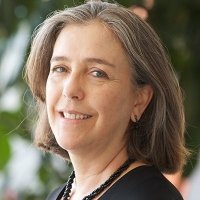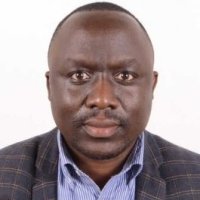HoPE for Sustainable Development: Development Results from Integration in East Africa
The Sustainable Development Goals (SDGs) are an ambitious framework for reducing poverty and improving the lives of billions of people. They were agreed to last year by governments at the United Nations and cover developing and developed countries alike. But how will governments, NGOs, and other organizations go about actually accomplishing them over the next 15 years?
Paula Caballero, global practice director for the environment and natural resources at the World Bank, urged institutions to seek out new ways of doing development, from food security to global health efforts. “It is through partnerships and through innovation that we can really start to make use and really incentivize these new frameworks that we have agreed to.”
One such approach is known as population, health, and environment, or PHE. Speaking at the Wilson Center on June 21, Pamela Onduso, a senior technical advisor on youth advocacy and partnership at Pathfinder International Kenya, defined PHE as “an integrated approach to improve access to health services, especially family planning and sexual and reproductive health, while at the same time helping communities to manage natural resources and conserve the critical ecosystems on which they depend.”
Supported by Pathfinder International, the U.S. Agency for International Development, MacArthur Foundation, and Packard Foundation, the Health of the People and Environment in the Lake Victoria Basin initiative, or HoPE-LVB, has employed the PHE model to address food insecurity, weak health infrastructure, environmental degradation, high maternal and infant mortality, and inadequate water, sanitation, and hygiene.
“The PHE approach advances the conversation about how multi-sector programming and multi-stakeholder partnerships are critical to the success of the SDGs,” said Onduso.
“With the End in Mind”
Much of Pathfinder’s work is focused on women’s health, but with HOPE-LVB there was a conscious effort to expand beyond that comfort zone.
“If you really want to make a dent on maternal mortality, that’s not a standalone goal,” said Caballero. “You need an entire system, you need roads, energy, education…to help that woman deliver that baby in a difficult situation. It’s not just an isolated target.”
Four years ago, the project was designed “with the end in mind,” said Onduso. That end was scalability – moving from success in a handful of communities to many more.
Dorah Taranta, a project manager for Pathfinder International Uganda, explained that the HoPE-LVB team first identified key partnerships “both for implementation but also for sustainability.” These partners included actors from the government, civil society, and environmental sector who would strengthen the project’s interventions and increase the odds of change perpetuating beyond the length of the initial funding cycle. They interviewed key community groups to include women, youth, farmers, young mothers, beach management units, and facility- and community-based health care providers.
“Previously, communities depended on projects that come and go”
Taranta said they realized that “at all levels, an individual, or a group, or a department cannot reach the needs of all that we serve. We need partnerships, we need to work together.” This also included outreach to local government. “We have been able to bring ministries of health, population, [and] natural resources to come together and think about the best way to reach the communities they serve.”
After conducting group and individual interviews, the team determined which interventions were relevant and whether they could be successful. For example, members of a beach management unit explained how overfishing was affecting the daily catch and shared suggestions for how HoPE-LVB could help the community to take a more active role in protecting their natural resources.
Champions and Model Households
These insights allowed HoPE-LVB to design interventions that included “upgrading the skills of service providers from health, agriculture, animal husbandry, and fisheries, conducting PHE-integrated community dialogues, outreach and door-to-door education and services, and supporting the establishment of PHE village committees.”
Women and men met together to discuss “issues affecting reproductive health, their incomes, and issues affecting the environment,” said Taranta. With the information drawn from these community meetings, participants “have been able to come up with environment-friendly income generating activities.”
Next, they employed a “model household” approach of tracking behaviors and championing those that achieved success. “At the household level we are able to see what these households, what these individuals are doing to change their lifestyles,” said Taranta. “What are they doing to preserve the natural resources they depend on? What are they doing to promote what they have learned?”
The team then moved toward addressing broader systems. They considered how to empower women, Taranta said. “How do we work with public health facilities? How do we build partnerships between public and private facilities?”
Finally, after identifying “champions” across sectors, districts, and villages, they did a training of trainers, passing on advocacy tools that spread through multiple communities and encourage ownership. The goal was to give individuals “a voice to demand their rights and to demand for services,” said Taranta.
“A Do-able Miracle”
Caballero praised HoPE-LVB as a proof of concept, rather than a pilot, because it’s shown it can change people’s behaviors. “Pilot has the small mentality of something finite…and proof of concept has implicit in it how we are going to take this forward.”
She called the approach a “do-able miracle.” While there may be some high up-front costs, the long-term savings are “incredible,” she said. “These efficiencies, the linkages, the way that men have been involved, all these unexpected, amazing breakthroughs” actually lower the transaction costs over time.
Currently in its third year of a five-year funding cycle, the project will conclude in 2017, and the next two years will bring a focus on scaling up, said Onduso.
“Previously, communities depended on projects that come and go,” said Millicent Kodande, a monitoring and evaluation officer with Pathfinder International Kenya. But she pointed to the prevalence of clean cookstoves as evidence that the impact of this project is more lasting.
“These clean cookstoves use a single or two pieces of firewood for cooking in the kitchen, have less smoke, and are more efficient for use at home,” Kodande said. “So many women have adopted it because when you have less fuel, you can still cook for your family, but there is less indoor pollution in the households.”
And they have a positive multiplier effect within the household. “It has improved communication at home,” Kodande said, “[men] are more interactive with the family, following up on homework, and ensuring that, when the woman is busy getting water, he is also helping with the cooking.”
Integration across sectors has contributed to improving resilience in the region, said Charles Kabiswa, director of programs at Ecological Christian Organization in Uganda. HoPE-LVB has helped communities set up climate change adaptation measures and improve food security, agricultural sustainability, and health, all of which contribute to people’s ability to bounce back from shocks and stressors.
“It is about doing development differently,” said Caballero. “It isn’t really about changing economies, it is about changing mindsets…and when people are given an opportunity, it unleashes potential.”
This event was co-sponsored by the U.S. Agency for International Development - Evidence to Action Project.
Event Resources:
Written by Sreya Panuganti, edited by Schuyler Null.
Feature Photo Credit: Lake Victoria, Uganda, courtesy of flickr user Michell Zappa.
Speakers


Vice President, Sustainable Markets, Pact

Hosted By

Environmental Change and Security Program
The Environmental Change and Security Program (ECSP) explores the connections between environmental change, health, and population dynamics and their links to conflict, human insecurity, and foreign policy. Read more


Maternal Health Initiative
Housed within the Wilson Center's Environmental Change and Security Program, the Maternal Health Initiative (MHI) leads the Wilson Center’s work on maternal health, global health equity, and gender equality. Read more
